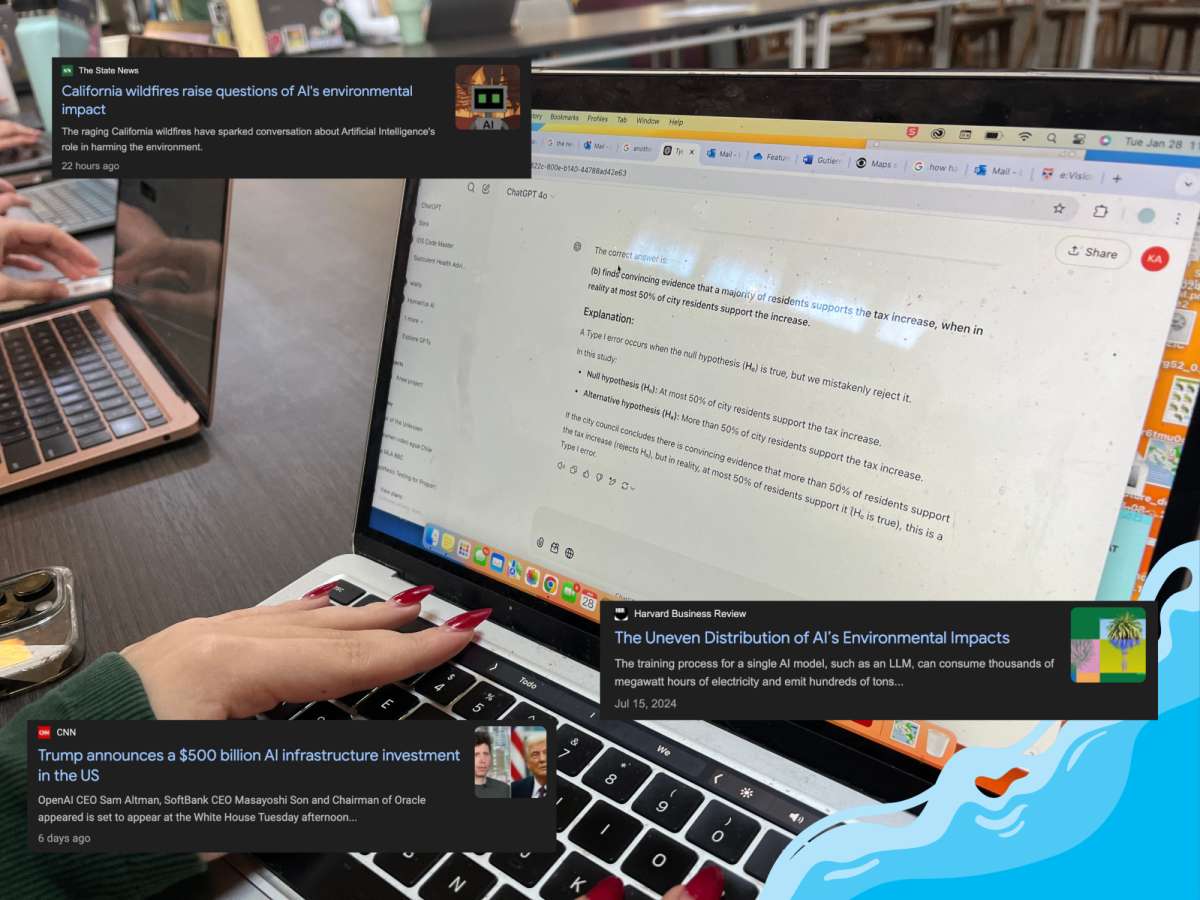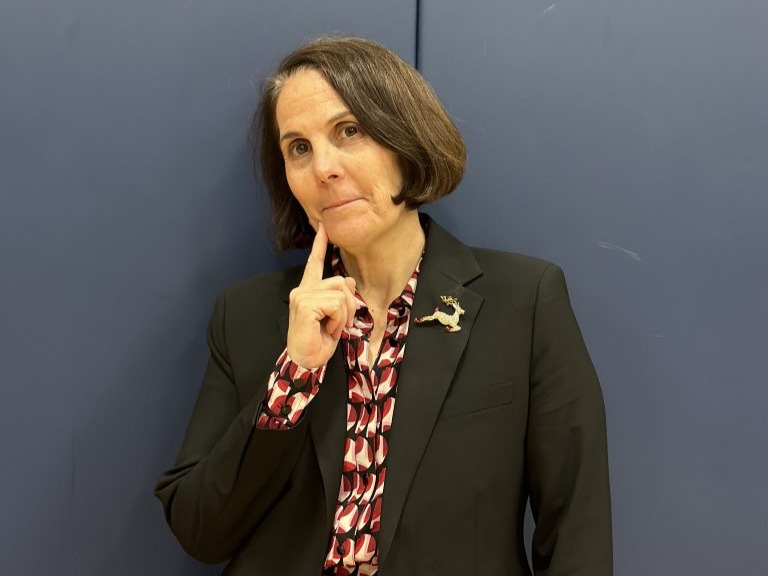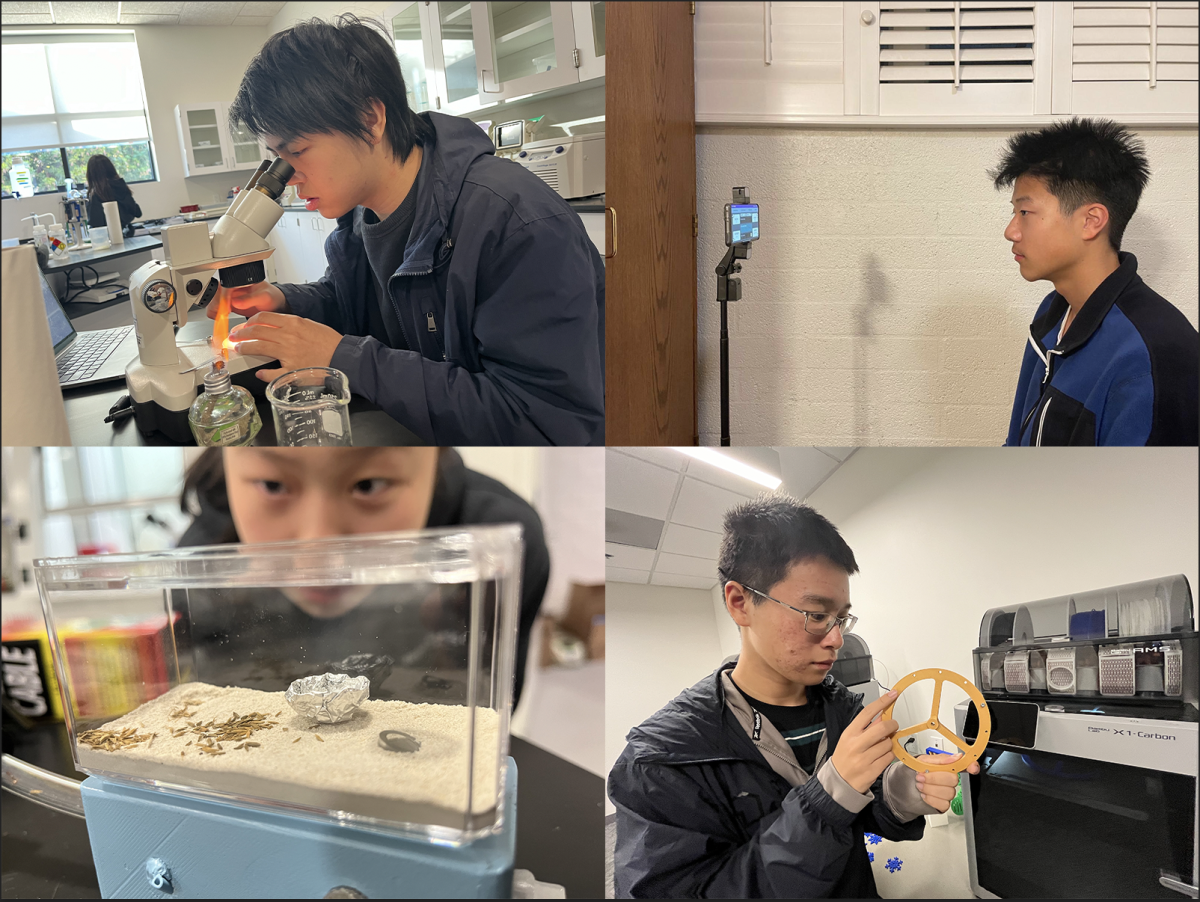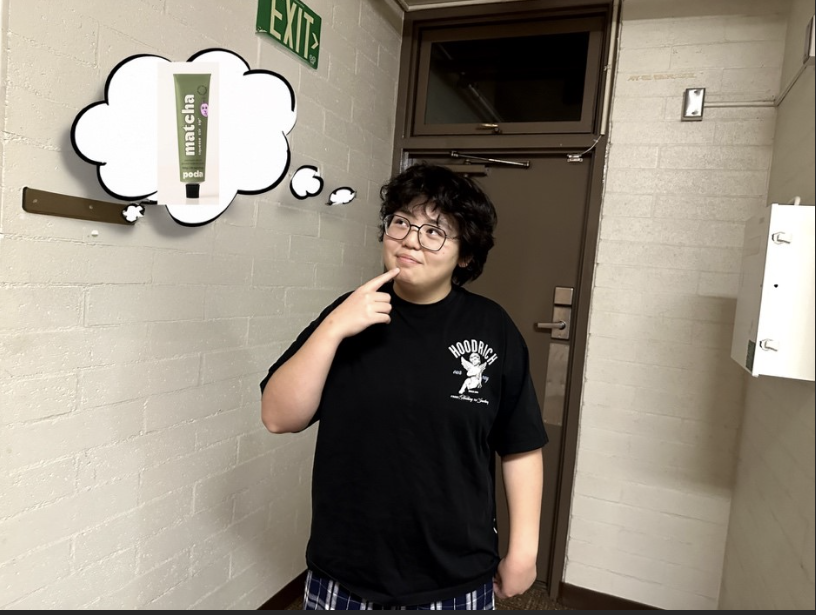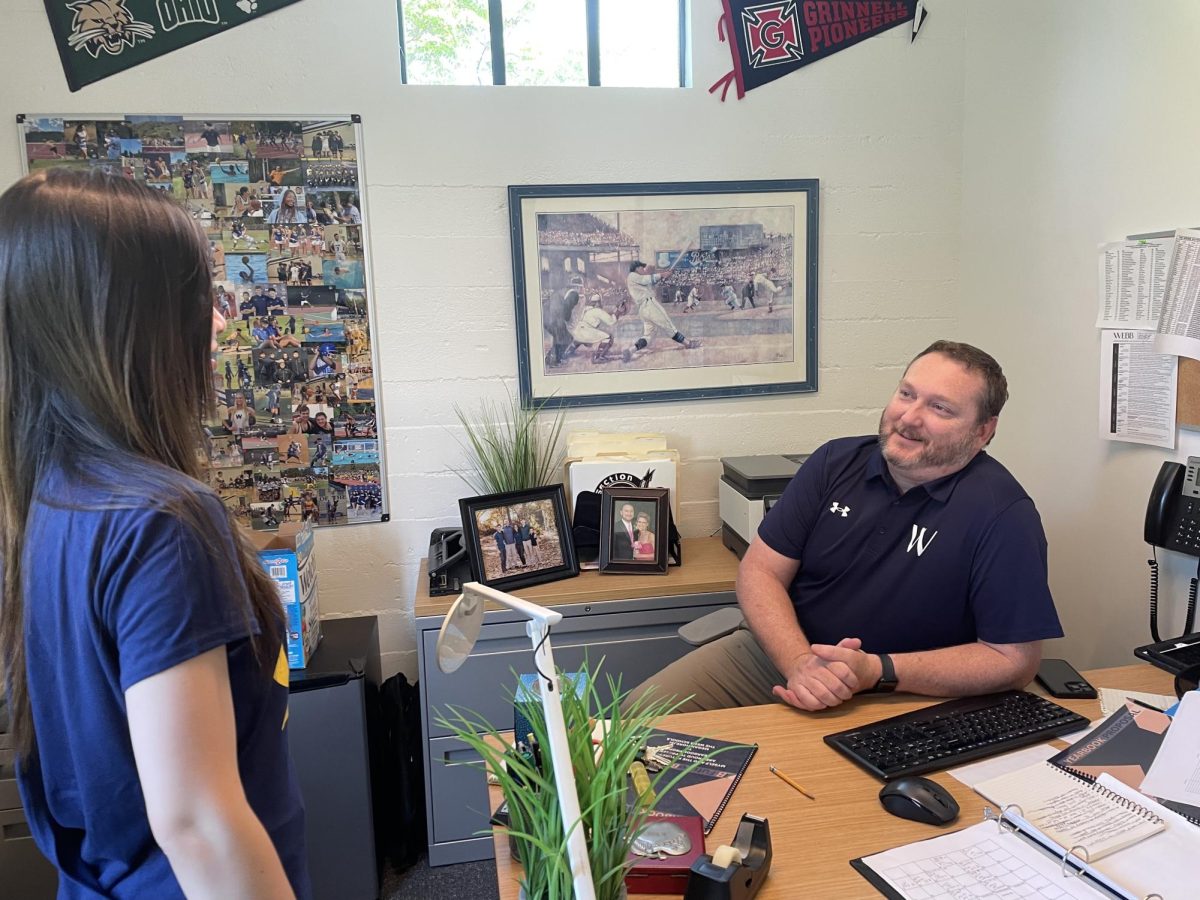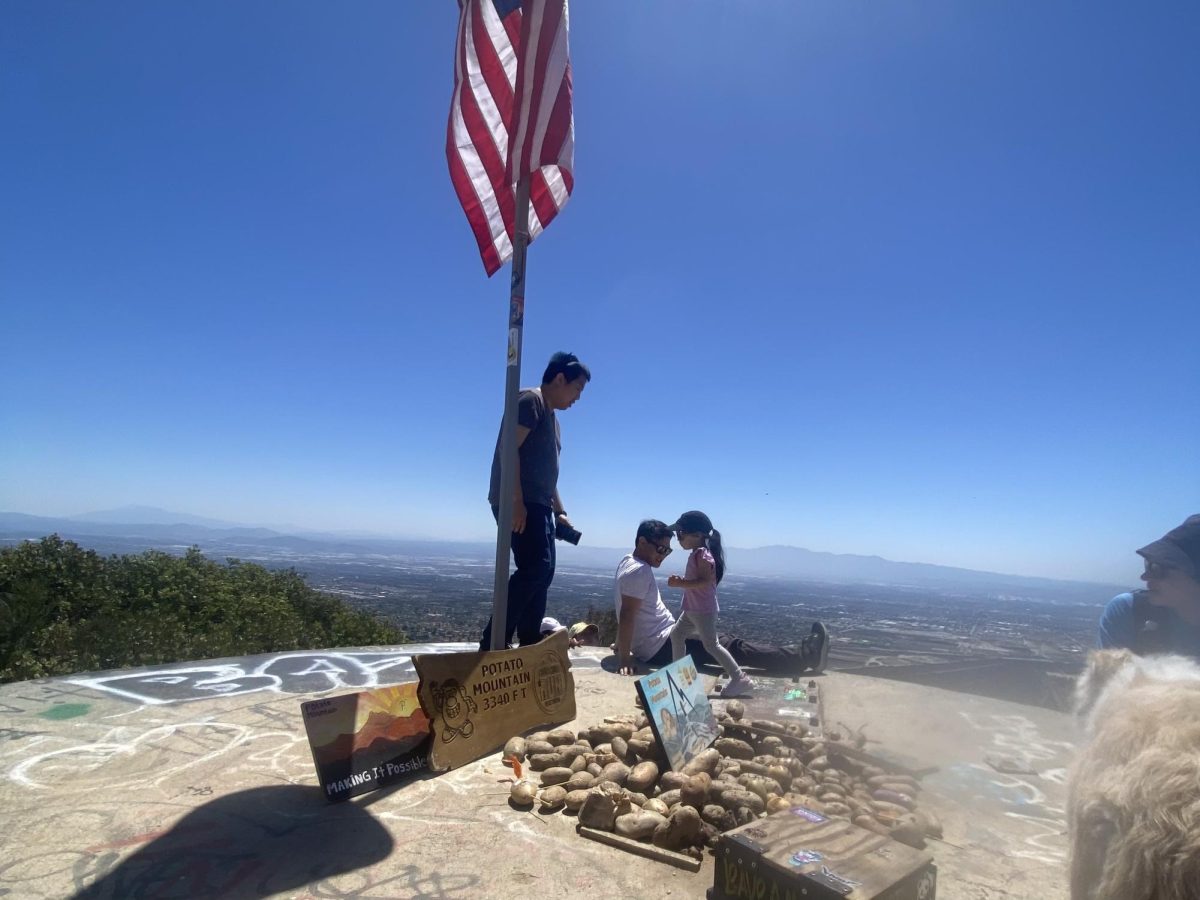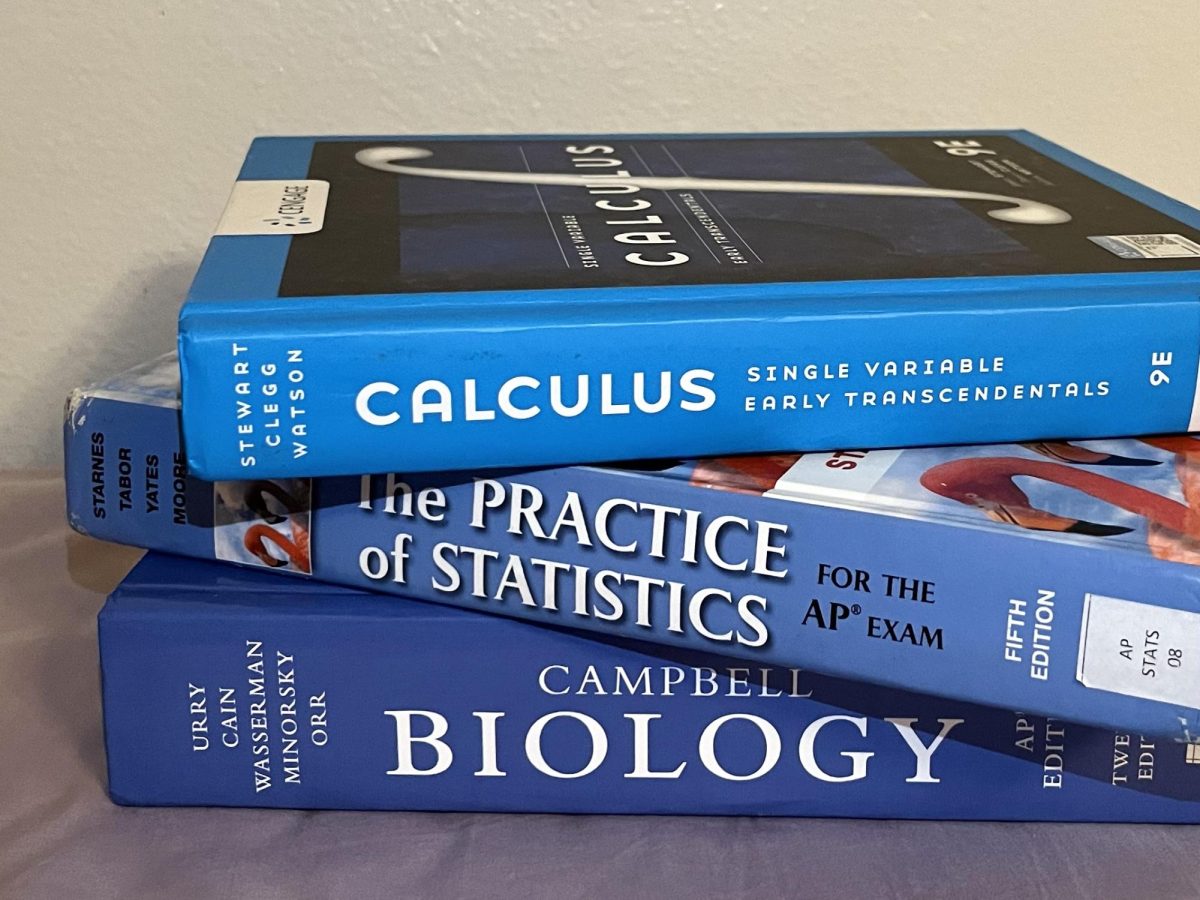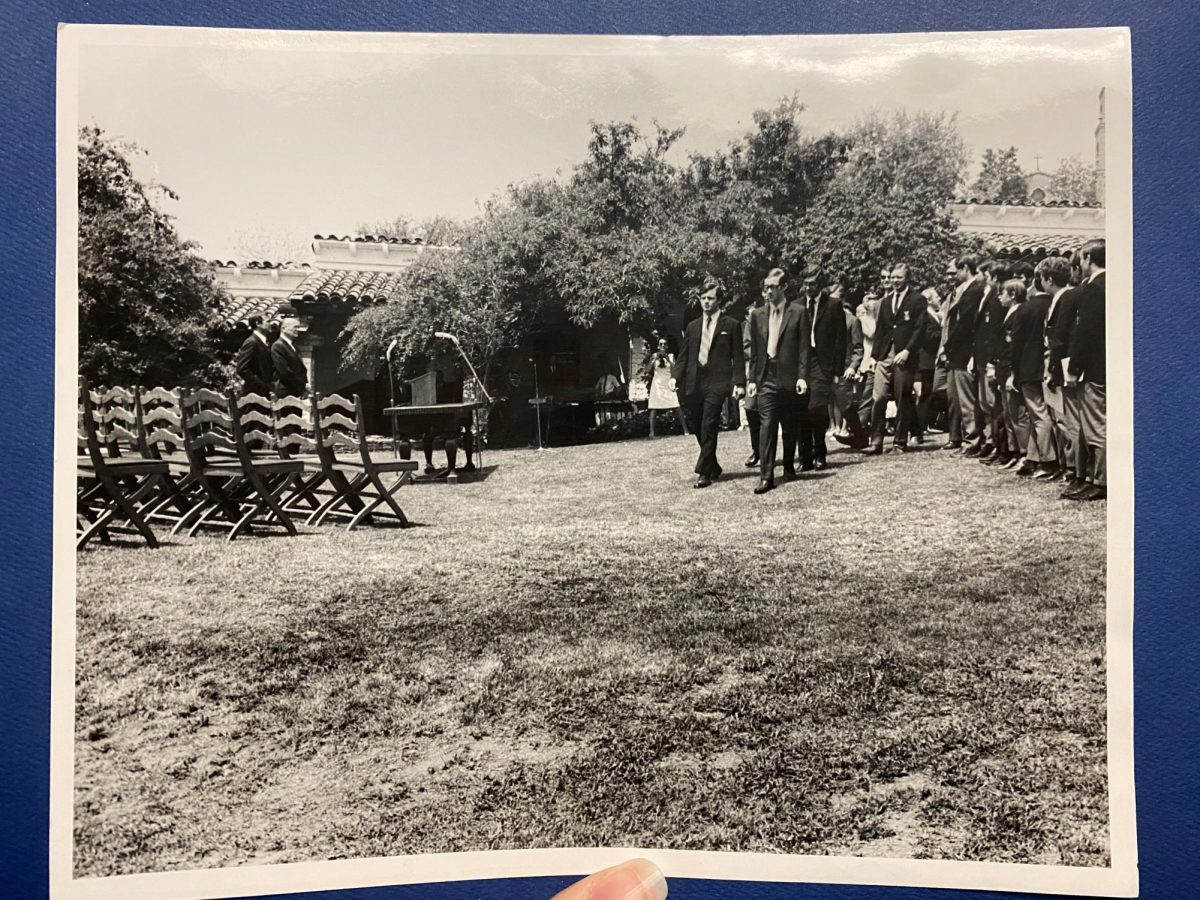If someone were to ask what the most revolutionary invention in the history of art was, what are the first things that come to mind?
Is it the creation of oil paint that made immaculately detailed paintings possible? Is it the invention of concrete in ancient Rome that allowed them to build the famous Pantheon? Or is it the invention of daguerreotypes that gave birth to an entirely new art form called photography?
These inventions are all significant instances of innovation in history, but did you know that we are currently living in one of these moments? We are witnessing the emergence of a distinctive art form that is unlike any other in history, and it is made possible by a seamless merge between art and computer science technology — the latest significant invention in art history.
TeamLab – from the museum to the bathhouse
In the summer of 2018, a museum called TeamLab Borderless (https://www.teamlab.art/) opened to the public in Tokyo, Japan, showcasing artworks by the renowned media art group TeamLab. TeamLab Borderless is not your typical art museum – it has 520 computers and 470 projectors working simultaneously in real-time to display the everchanging artworks.
In fact, this unique art form is characteristic of TeamLab’s works, which creates immersive and interactive spaces for viewers to appreciate the visual wonders constructed by computer programs. One of the key features of their artworks is that the displayed visual forms are constantly changing in response to the viewers’ activities so that the appearance of the artwork at any moment is unique to that point in time.
These ever-evolving artworks are thus producing exclusive art-viewing experiences for individuals, made possible by the use of strong data-processing computers at the site.
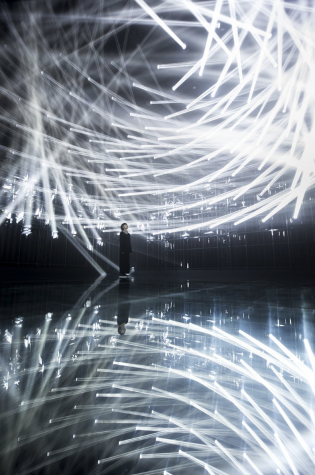
(Image Original Link: https://www.designboom.com/art/Teamlab-mori-building-digital-art-museum-open-interview-07-15-2018/)
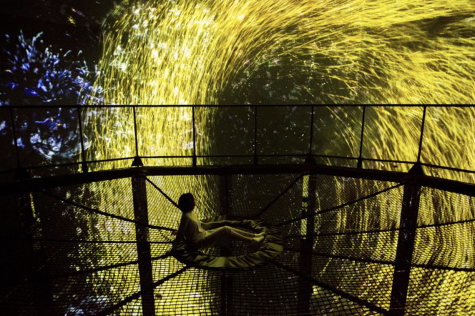
(Image Original Link: https://www.designboom.com/art/Teamlab-mori-building-digital-art-museum-open-interview-07-15-2018/)
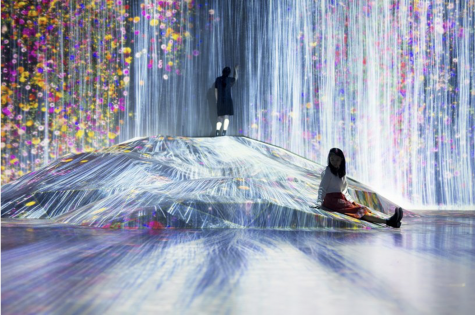
TeamLab’s latest work is located in a conceptual sauna house, where the alternating hot and cold baths place visitors in a meditative sauna trance, a neurological state in which their five senses are heightened, and they become fully immersed in the surrounding light displays. These lights are controlled by interactive computer programs that change the display based on the actions of the visitor. Hence, the artwork draws the visitors’ attention to their existence in relation to their surroundings by incorporating these programs.
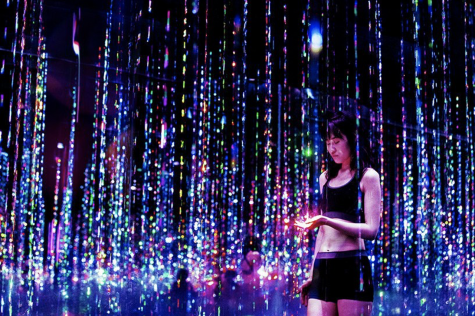
(Image Original Link: https://www.designboom.com/art/Teamlab-immersive-art-sauna-experience-tokyo-03-16-2021/)
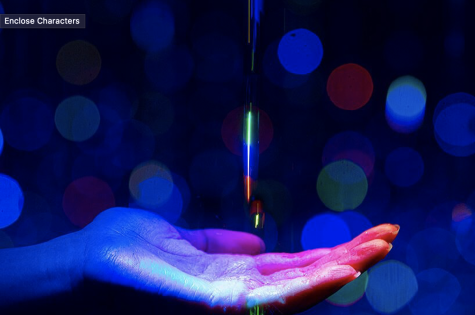
(Image Original Link: https://www.designboom.com/art/Teamlab-immersive-art-sauna-experience-tokyo-03-16-2021/)
TeamLab’s interactive installation art has a wide range of possibilities and can also be viewed in relation to real-life settings, such as a bathhouse. In 2019, TeamLab showcased their work in an abandoned bathhouse, where they installed illuminated cuboids as a part of the settings. These glowing “megaliths” seem to emerge from the bathhouse floor, and their surfaces are made of LED screens, where the visual contents are generated and controlled by servers at the site according to the viewers’ actions.
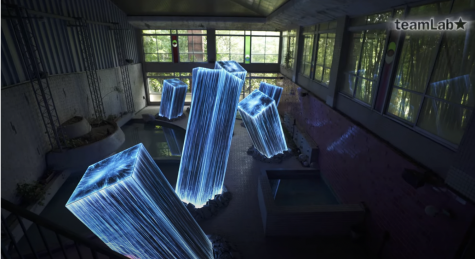
(Original Link: https://www.youtube.com/watch?v=ypiFUa4d1hU&t=3s)
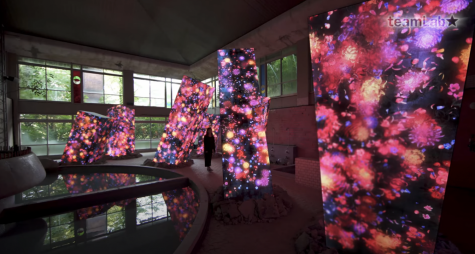
(Original Link: https://www.youtube.com/watch?v=ypiFUa4d1hU&t=3s)
D’strict – a realistic yet surreal world
Among most of TeamLab’s computer program-based interactive installations, the visual forms displayed onscreen are completely generated by the computers in real-time. This image-creating technique is strongly dependent on the processing capabilities of the on-site servers and the capabilities of the technology that supports the computer hardware. Not to mention, since computers need to constantly generate high-resolution images, their stability also becomes a point of concern. All of these factors pose limits to artworks that rely greatly on real-time computations.
Fortunately, interactive installation art can continue to develop in creative directions as computer programmers discover ways to cope with computing limitations. For instance, D’strict is regarded as one of the leading artists groups whose works combine real-time computations with off-line rendered animations. Through utilizing this combined strategy, their installations are able to present astonishing details and realistic physical movements despite computing limitations.
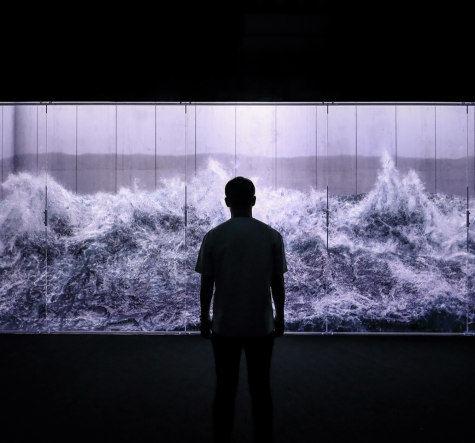
(Image Original Link: https://arteus.imweb.me/#lg=w2020092695f2170f3506d&slide=4)
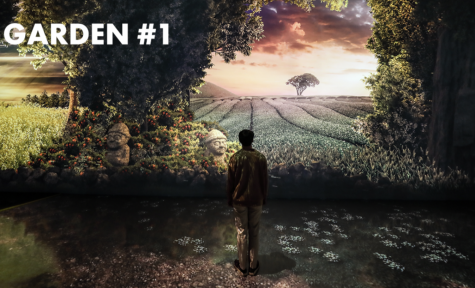
(Image Original Link:https://arteus.imweb.me/#lg=w2020092695f2170f3506d&slide=1)
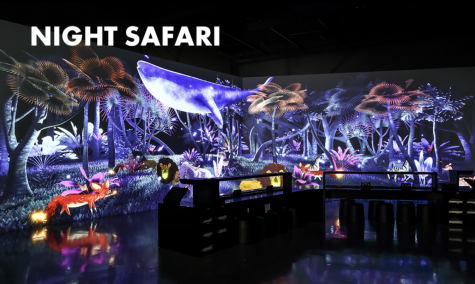
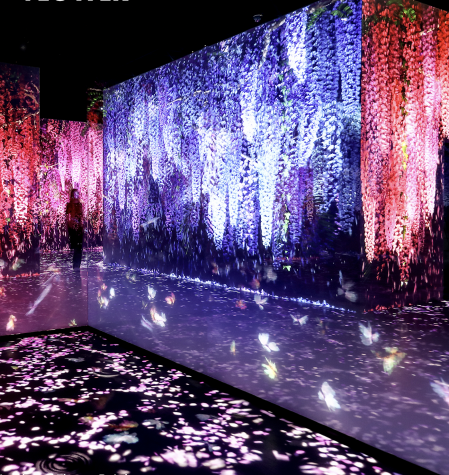
(Image Original Link:https://arteus.imweb.me/#lg=w2020092695f2170f3506d&slide=3)
D’strict creates spectacular images by reshaping visual impressions of natural elements, such as ocean waves and the northern lights. Viewers are presented with realistic yet other-worldly experiences by observing the water, waves, or scenery of the countryside. The astonishing part is that these detailed and realistic images are not videos from lens-based photography, but are generated by computers. However, unlike the real-time reactionary visuals by TeamLab, the displays created by D’strict artists are pre-rendered footage that are programmed to play or pause based on the viewers’ actions on site accordingly.
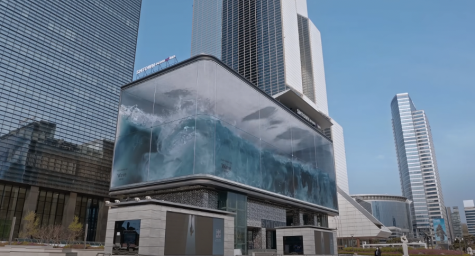
(Original Link: https://www.youtube.com/watch?v=ZzxuftgFuoE&list=TLGGV4GsiCzgMz8yNTA0MjAyMQ&t=31s)
GLSL, Visual Programming and Real-time Engines – from GPU to autonomous driving
The world of computer programming is constantly evolving with the development of new technology; the invention of the Graphics Library Shading Language (GLSL) is made possible by improvements on the Graphics Processing Unit (GPU). The visual programming software, Touchdesigner, was developed using the programming language Python, and was the result of improvements in programming environments. Visual programming software and programming languages such as GLSL have bridged the minds of artists and computer scientists to produce this modern art form.
It would be hard not to mention computer games when discussing the collaboration between artists and computer scientists. Computer Generated Image (CGI) technology and aesthetics were first developed in the gaming industry and have tremendously influenced media art today. Gaming engines, being the containers and the renderers of the 3D models, are now becoming more and more irreplaceable in the creation of CG images or animations. Thus, the use of the gaming engine in art pieces does not come off as a surprise.
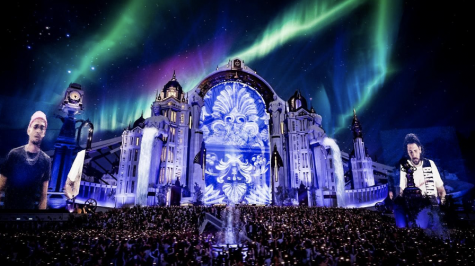
(Image from: https://weraveyou.com/2020/10/tomorrowland-shares-behind-the-scenes-documentary/)
Rethinking the future of art
These computer-aided artworks are revolutionizing our understanding of art and introducing possibilities that have never been seen in the history of art — the uniquely ephemeral and interactive nature of contemporary artworks from Teamlab for instance. The involvement of technology does not diminish creativity; on the contrary, it vastly expands the grounds on which our creativity roams, allowing for more freedom in artistic expression. As we achieve advancements in computer science, the new possibilities that technology offers artists become increasingly unbounded. One thing is for sure – computer technology is the future of a more innovative and bewildering world of art.
Bibliography:
Arte Museum, Creating New Experience Using Technology | LOTTE HOTELS & RESORTS MAGAZINE
https://www.lottehotelmagazine.com/en/travel_detail?no=370
NVIDIA Drive | Level 2+ Autonomous Vehicle Solution
BBC Click to air virtual jazz performance
https://www.broadcastnow.co.uk/tech/bbc-click-to-air-virtual-jazz-performance/5155844.article
THE JOURNEY TO ZERO ACCIDENTS – NVIDIA DRIVE
https://resources.nvidia.com/en-us-drive-overview
Borderless and brilliant: teamlab’s dreamlike digital art museum is now open
https://www.designboom.com/art/teamlab-mori-building-digital-art-museum-open-interview-07-15-2018/
Here’s What We Know About NVIDIA’s Autonomous Driving System
https://www.hotcars.com/heres-what-we-know-about-nvidias-autonomous-driving-system/
Introduction to GLSL and fragment/pixelshaders
https://weworkweplay.com/play/introduction-to-glsl-and-fragment-pixel-shaders/
Korea’s Largest Immersive Art Exhibition With Realistic Crashing Waves
https://thesmartlocal.com/korea/immersive-art-exhibition-korea/
NVIDIA Introduces DRIVE AutoPilot, World’s First Commercially Available Level 2+ Automated Driving System
OpenGL Shading Language – OpenGL Wiki
https://www.khronos.org/opengl/wiki/OpenGL_Shading_Language
Self-Driving Cars Technology & Solutions | NVIDIA Automotive
https://www.nvidia.com/en-us/self-driving-cars/
teamLab projects digital nature on ‘megaliths in the bath house ruins’
https://www.designboom.com/art/teamlab-megaliths-bath-house-ruins-japan-08-02-2019/
teamLab stages immersive art and sauna experience in tokyo
https://www.designboom.com/art/teamlab-immersive-art-sauna-experience-tokyo-03-16-2021/
Lidar sensor makers choose Nvidia Drive for development
Tomorrowland releases documentary about their 2020 virtual festival
https://weraveyou.com/2020/10/tomorrowland-shares-behind-the-scenes-documentary/



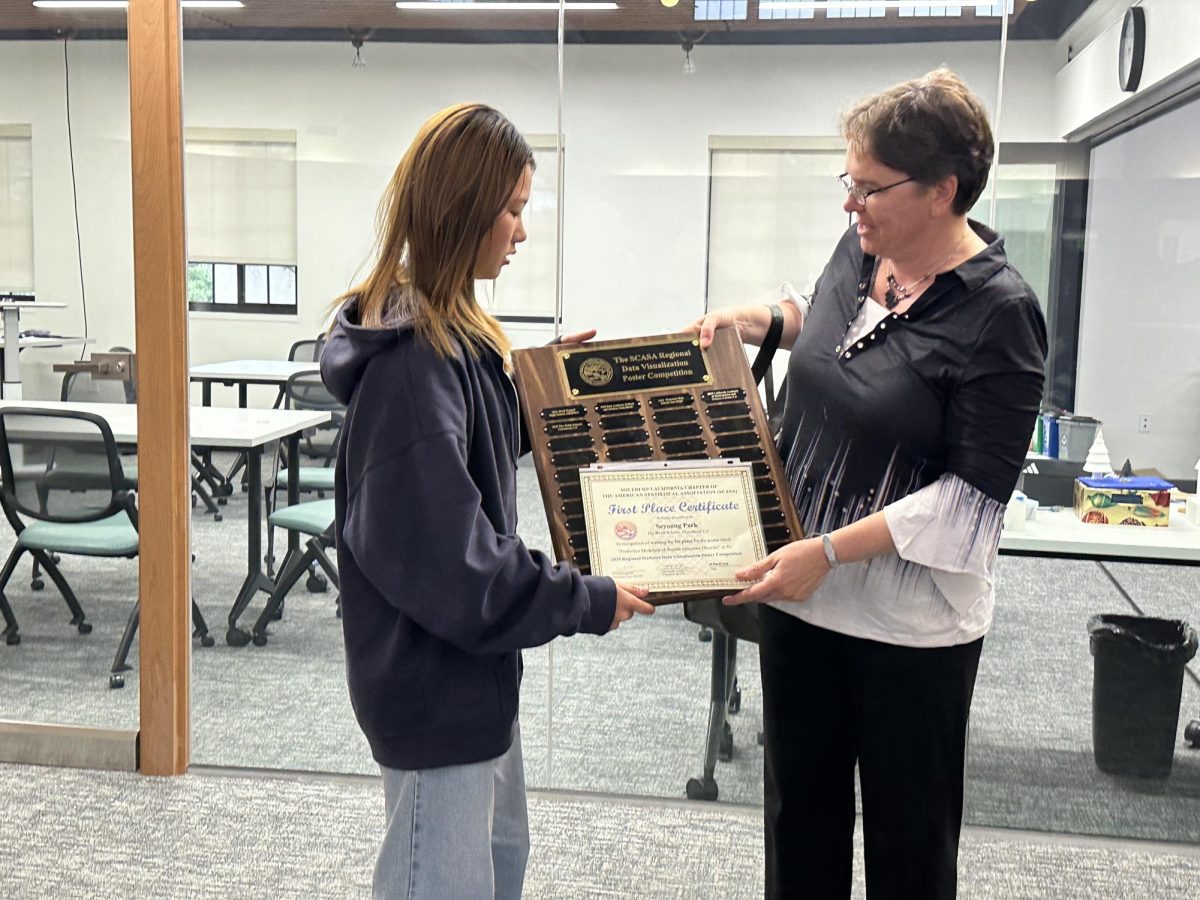
![All members of the Webb Robotics Winter season teams taking a group photo. Of note is Team 359, pictured in the middle row. “It was super exciting to get the win and have the chance to go to regionals [robotics competition]” Max Lan (‘25) said. From left to right: Max Lan (‘25), Jerry Hu (‘26), David Lui (‘25), Jake Hui (’25), Boyang Li (‘25), bottom Jonathan Li (’25), Tyler Liu (‘25)](https://webbcanyonchronicle.com/wp-content/uploads/2025/03/Screenshot-2025-03-10-at-2.41.38 PM.png)
